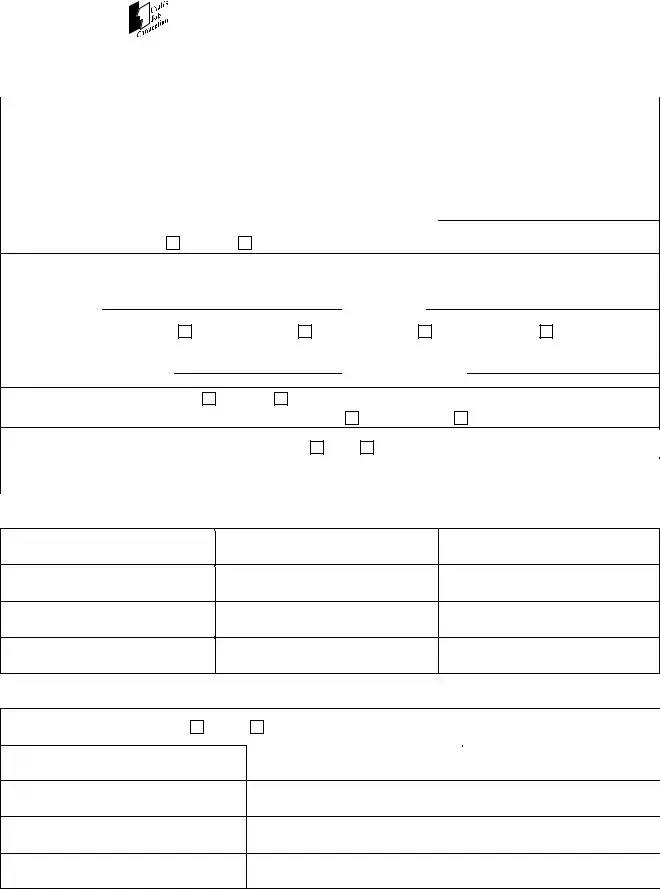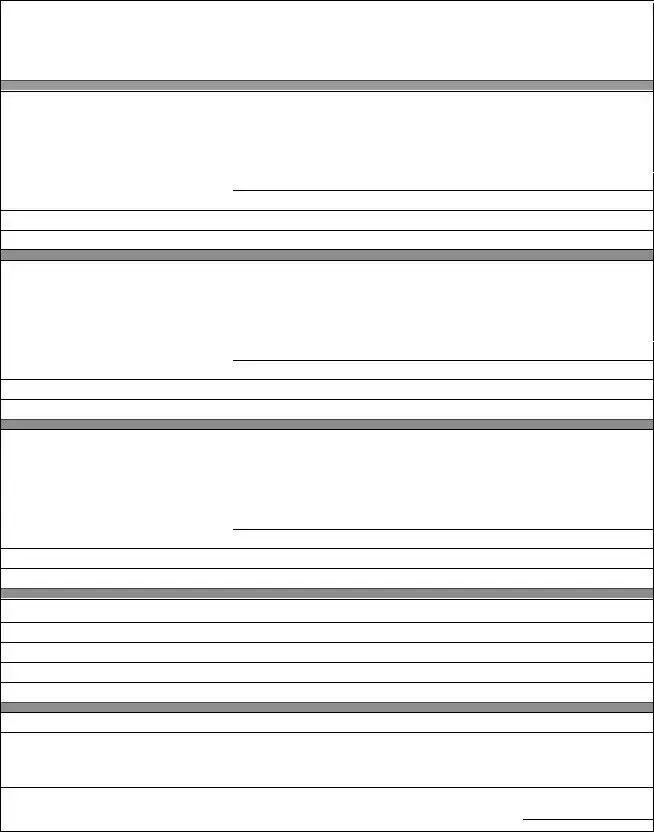The Utah DWS-SDS 305 form closely resembles a standard job application form utilized across various industries. These standard applications collect personal information, employment history, educational background, and references, similar to the detailed collection found on the DWS-SDS 305. Both types of documents are designed to provide a comprehensive overview of an applicant's qualifications and fit for a potential job opening. The primary objective is to screen candidates efficiently, ensuring that the most qualified individuals are identified for further assessment.
Another document akin to the Utah DWS-SDS 305 form is the federal government's SF-171, Application for Federal Employment. Although tailored specifically for positions within the federal government, the SF-171 shares the DWS-SDS 305's goal of gathering comprehensive information about an applicant’s professional and educational background. Both forms are critical in the initial screening phase, helping hiring managers to sift through candidates based on their qualifications, experiences, and suitability for the role at hand.
The Form I-9, Employment Eligibility Verification, also shares similarities with the DWS-SDS 305, despite serving a different purpose. The Form I-9 is required by the U.S. government to verify an employee's authorization to work in the United States. Like the DWS-SDS 305, it collects personal information and requires documentation to support the application. Both forms are crucial for compliance in the hiring process, ensuring that the employer is informed about the legal working status and background of the prospective employee.
A resume is a personal document that, like the DWS-SDS 305, outlines an individual’s professional history, skills, and educational background. While a resume is often more customizable and less standardized than the DWS-SDS 305, both serve the purpose of highlighting an individual's qualifications and competencies to prospective employers. The major difference lies in the structured format of the DWS-SDS 305, which aims to uniformly evaluate candidates.
The Curriculum Vitae (CV) is another document similar to the DWS-SDS 305, particularly for academic, educational, scientific, or research positions. A CV provides a comprehensive overview of one's career, much like the DWS-SDS 305. However, it is typically more detailed and extensive, touching on areas such as publications, presentations, and detailed academic achievements. Both documents play a vital role in the application process, offering a structured way for candidates to present their credentials.
Letters of recommendation are often submitted alongside the DWS-SDS 305 form and serve a complementary role. While the DWS-SDS 305 provides a self-reported account of an applicant's qualifications and experiences, recommendation letters offer third-party validations of these claims. Both pieces are integral to the application process, providing a fuller picture of the candidate to the potential employer.
Professional licenses and certificates, which the DWS-SDS 305 form asks applicants to list, stand on their own as substantial documents verifying an individual's qualifications and legal authorization to perform certain jobs. These documents support the information provided in the DWS-SDS 305, underscoring the applicant's specific skills, compliance with industry standards, and ongoing commitment to professional development. Together, they enhance the applicant's credibility and suitability for the job.
Job descriptions share a practical alignment with the DWS-SDS 305 form but from the employer’s perspective. While the DWS-SDS 305 collects information about the applicant, a job description outlines what the employer seeks in a candidate. Both documents are essential for a successful job match, ensuring that the expectations and qualifications align between the candidate and the employer.
The LinkedIn profile has become a digital extension of traditional application forms like the DWS-SDS 305. A LinkedIn profile often includes the same information about educational background, work experience, and skills. However, it also allows for endorsements and a more dynamic presentation of an individual’s professional persona. The interaction between a well-maintained LinkedIn profile and a traditional application form like the DWS-SDS 305 can significantly influence the hiring process.
Lastly, the Employee Handbook, while not a direct application document, is related in its function to inform and set expectations. Where the DWS-SDS 305 form collects applicant information, an Employee Handbook outlines the obligations and expectations of the company towards its employees, including policies, culture, and procedures. Understanding both documents is crucial for both parties to ensure a mutual fit and understanding of the working relationship.

